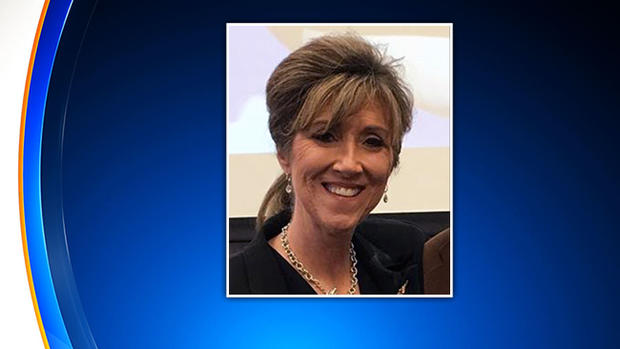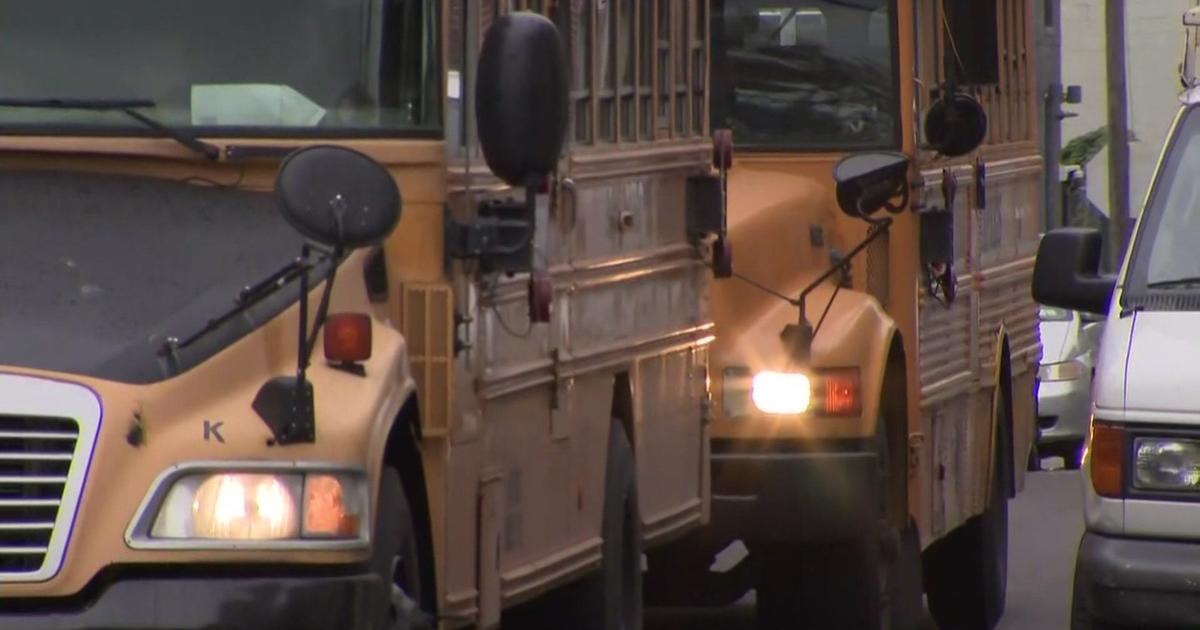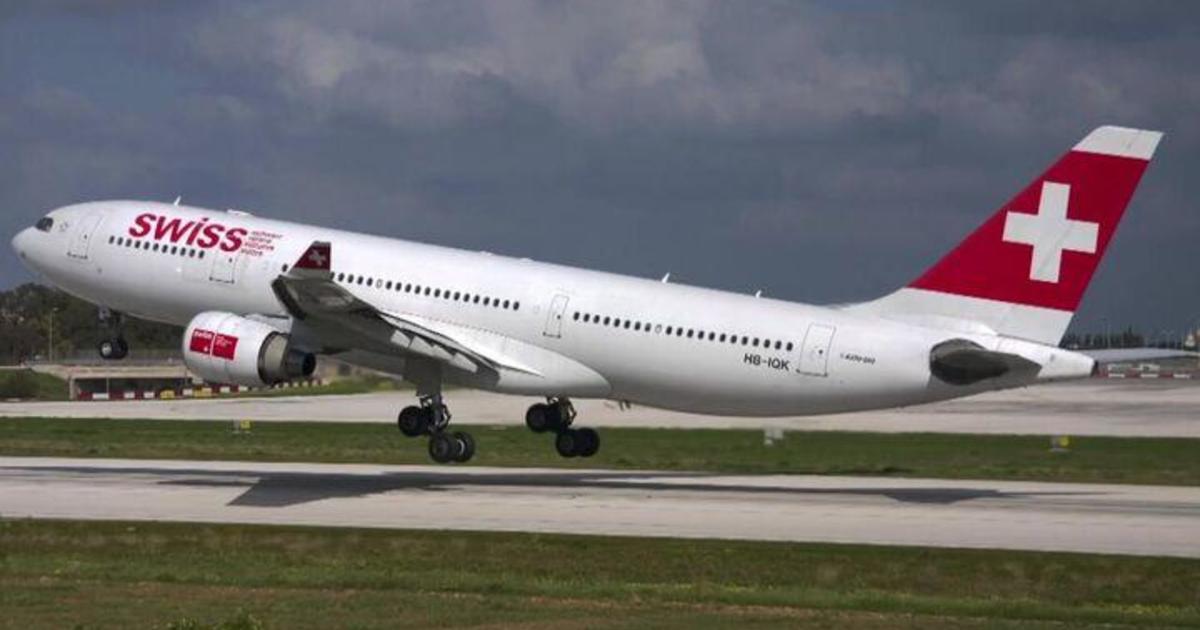Airline Regulators To Order Inspections On Engine Blades After Fatal Failure Aboard Southwest Flight
PHILADELPHIA (CBSNewYork/AP) — U.S. airline regulators said late Wednesday that they will order inspections on engine fan blades like the one involved in fatal failure that killed a woman in a plane that made an emergency landing in Philadelphia.
The Federal Aviation Administration said it will issue a directive in the next two weeks to require inspections of certain CFM56-7B engines. The announcement came after initial findings from investigators showed that Tuesday's emergency was caused by a fan blade that snapped off, leading to debris hitting the Southwest Airlines plane and a woman being partially blown out a window. She later died.
The pilots of the twin-engine Boeing 737 bound from New York to Dallas with 149 people aboard took it into a rapid descent Tuesday and made an emergency landing in Philadelphia.
Social media video shows oxygen masks dropping from the ceiling after passengers described hearing a loud bang about 40 minutes into the flight.
"It was just the most terrifying experience," said passenger Marty Martinez. "I felt like I could touch the tops of the skyscrapers in Philly."
"I just remember holding my husband's hand, and we just prayed and prayed and prayed," said passenger Amanda Bourman.
In a recording of conversations between the cockpit and air traffic controllers, an unidentified crew member reported that there was a hole in the plane and "someone went out."
Passengers scrambled to save a woman from getting sucked out the window that had been smashed by debris.
Passenger Kathy Farnan says she could hear the commotion going on behind her.
"She was way in back, cut in the face, flying glass from part of the engine hit glass and she got hit in the face and then I was told she was half out of the plane and people grabbed her back, ya know, from the pull," she said.
Passenger Alfred Tumlinson said a man in a cowboy hat rushed forward a few rows to grab the woman and pull her back in.
"She was out of the plane. He couldn't do it by himself, so another gentleman came over and helped to get her back in the plane, and they got her," he said.
"The window had broken and the suction, the negative pressure had sucked her outside the plane partially," said Phillips. "These two wonderful men, the EMT and a passenger, they managed to get her back inside the plane."
Passengers struggled to somehow plug the hole while giving the badly injured woman CPR.
Officials say the woman, identified as Jennifer Riordan, was killed. She was a Wells Fargo bank executive and mother of two from Albuquerque, New Mexico who was visiting New York. Seven other victims suffered minor injuries.
Riordan's family released a statement:
Jennifer Riordan has passed away as a result of previously reported events on Southwest Airlines flight #1380. Jennifer's vibrancy, passion and love infused our community and reached across our country. Her impact on everything and everyone she touched can never be fully measured. But foremost, she is the bedrock of our family. She and Mike wrote a love story unlike any other. Her beauty and love is evident through her children. We are so appreciative of the outpouring of support from family, friends and our community. We do ask that those who seek to express their condolences and prayers as well as media outlets respect our privacy at this time. Our family and friends need this time to both grieve and celebrate Jennifer's impact on us all. In her memory--please remember to always be kind, loving, caring, and sharing.
The Philadelphia coroner's office announced Riordan died of blunt force trauma to her head, neck, and torso.
Passengers praised one of the pilots, Tammie Jo Shults, for her cool-headed handling of the emergency. The former Navy pilot was at the controls when the plane made the emergency landing.
She walked through the aisle and talked with passengers to make sure they were OK after the aircraft touched down.
"She has nerves of steel. That lady, I applaud her," said Tumlinson. "I'm going to send her a Christmas card, I'm going to tell you that, with a gift certificate for getting me on the ground. She was awesome."
The National Transportation Safety Board sent a team of investigators to Philadelphia. In a late night news conference, NTSB chairman Robert Sumwalt said one of the engine's fan blades was separated and missing.
"This fan blade was broken right at the hub and our preliminary examination of this was that there's evidence of metal fatigue where the blade separated," Sumwalt said.
The engine will be examined further to understand what caused the failure. The investigation is expected to take 12 to 15 months. In the meantime, U.S. airline regulators say they'll order inspections on engine fan blades like the one involved in Tuesday's fatal failure.
Photos of the plane on the tarmac showed a missing window and a chunk gone from the left engine, including part of its cover.
A piece of the engine covering was later found in Bernville, Pennsylvania, about 70 miles west of Philadelphia, Sumwalt said.
As a precaution, Southwest said Tuesday night that it would inspect similar engines in its fleet over the next 30 days.
Southwest CEO Gary Kelly said there were no problems with the plane or its engine when it was inspected on Sunday.
The jet's CFM56-7B engines were made by CFM International, jointly owned by General Electric and Safran Aircraft Engines of France. CFM said in a statement that the CFM56-7B has had "an outstanding safety and reliability record" since its debut in 1997.
Last year, the engine maker and the Federal Aviation Administration instructed airlines to make ultrasonic inspections of the fan blades of engines like those on the Southwest jet. The FAA said the move was prompted by a report of a fan blade failing and hurling debris.
A Southwest spokeswoman said the engine that failed Tuesday was not covered by that directive, but the airline announced it would speed up ultrasonic inspections of fan blades of its CFM56-series engines anyway.
"There's a ring around the engine that is meant to contain the engine pieces when this happens," said John Goglia, a former NTSB member. "In this case it didn't. That's going to be a big focal point for the NTSB — why didn't (the ring) do its job?"
In 2016, a Southwest Boeing 737-700 blew an engine as it flew from New Orleans to Orlando, Florida, and shrapnel tore a 5-by-16-inch hole just above the wing. The plane landed safely. The NTSB said a fan blade had broken off, apparently because of metal fatigue.
(© Copyright 2018 CBS Broadcasting Inc. All Rights Reserved. The Associated Press contributed to this report.)




